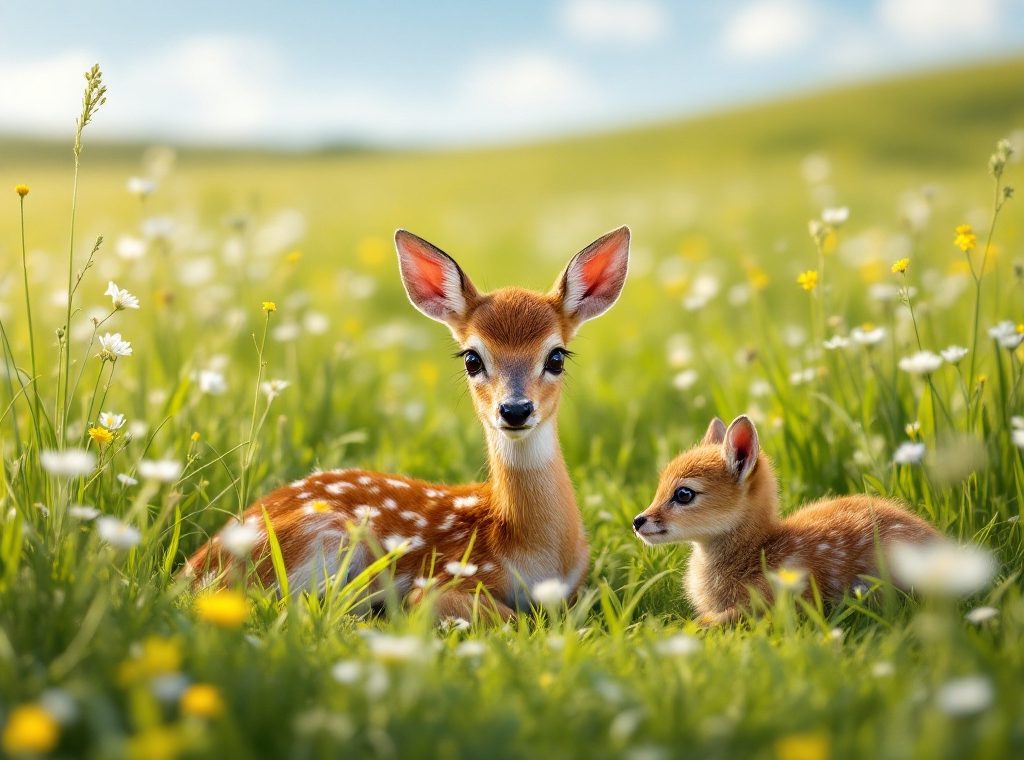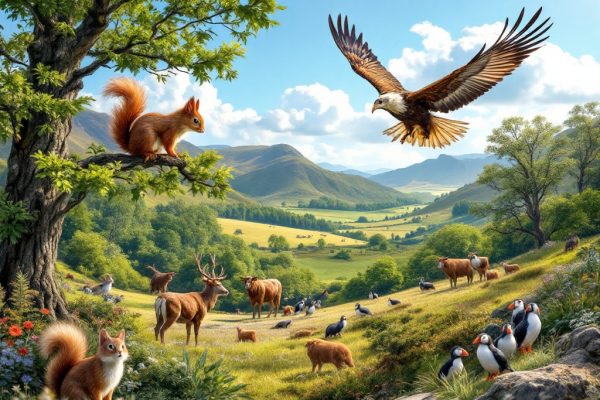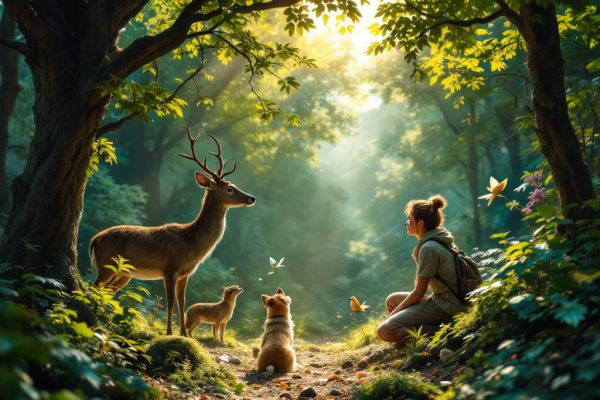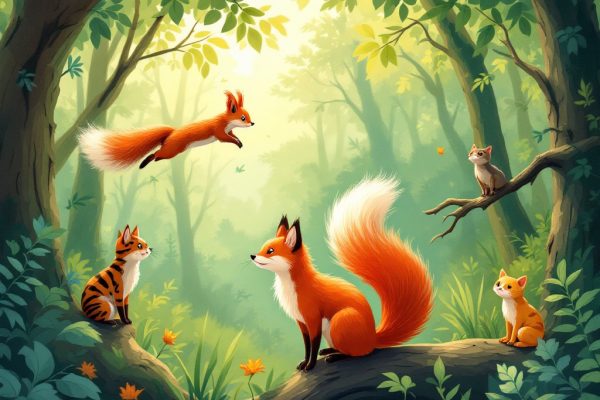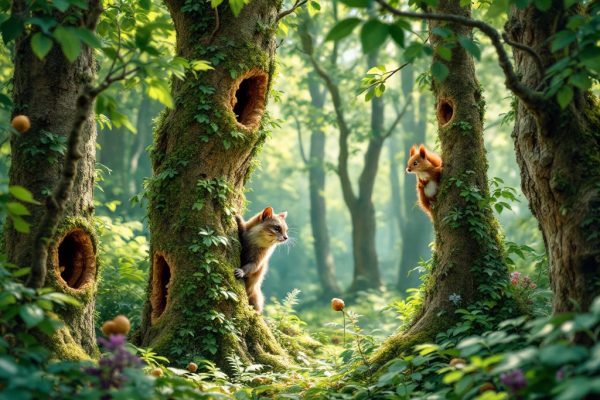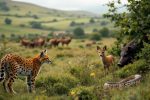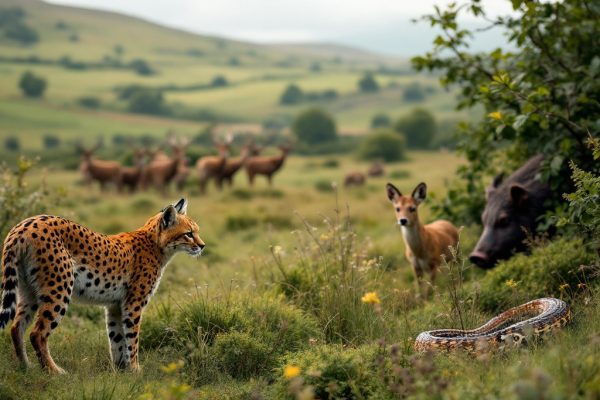What to Do if You Encounter Wild Baby Animals in Lothian: Safety Tips
Spot a lone fawn or leveret in Lothian? Don’t worry! Mother animals often leave their young hidden while foraging. Learn how to identify truly distressed wildlife and when to seek help from professionals like the Scottish SPCA or Hessilhead Wildlife Rescue Trust. Discover the secrets of Lothian’s wild babies and how to coexist peacefully. Read on to understand their natural behaviors and protect our precious wildlife.
Important information
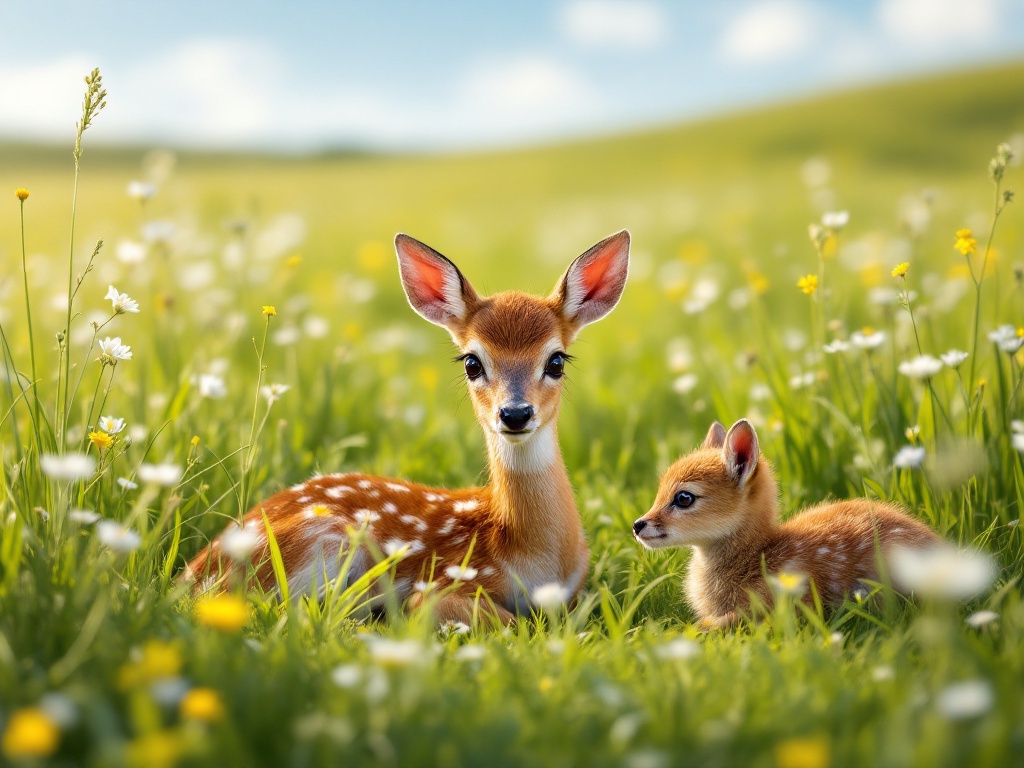
- Young animals alone are often not abandoned; mothers frequently leave them hidden while foraging.
- Never feed wild animals. Human food harms their health, creates dependence, and can lead to aggression.
- Observe wildlife from a distance. Do not approach, touch, or feed them. Contact wildlife professionals if an animal is in danger.
- If you find a sick, injured, or orphaned animal, contact a licensed wildlife rehabilitator (Scottish SPCA in Lothian) for guidance.
- When helping wildlife, wear gloves and protective gear, and keep children and pets away.
Understanding Wild Baby Animals in Lothian
It’s not unusual to see a solitary baby animal in Lothian, but they are rarely truly alone. Mothers, such as deer and rabbits, often leave their young ones hidden while they search for food to ensure their safety. This is instinctive behavior, also practiced by foxes. Understanding the habits and habitats of Lothian’s diverse wildlife allows us to coexist harmoniously.
Fawn Season and Common Species
Spring and early summer bring fawn season to Lothian, where roe and red deer are common sights. Mother deer frequently leave their young unattended, not due to negligence, but as a natural form of protection. This separation, while the mother forages, helps keep both mother and fawn hidden from predators.
Natural Behaviors and Habitats
Roe deer are a common sight in Lothian, giving birth during the spring and early summer months. Newborn fawns instinctively conceal themselves in tall grasses or dense vegetation. Lying perfectly still, their spotted coats provide excellent camouflage against predators. While hidden, their mothers forage nearby. Discovering a hidden fawn can be surprising. It’s important to remember that these fawns aren’t abandoned; their mothers will return. Admire them from afar, and leave them undisturbed.
Myths and Misconceptions About Wild Baby Animals
It’s a common misconception that a solitary baby animal has been abandoned. Mother animals often leave their young while foraging for food. While it’s natural to be concerned, human intervention is rarely necessary and can even be detrimental. Approaching wildlife stresses the animals, and a mother might reject her offspring if it’s been touched by a human.
- Observe from a distance, instead of interfering.
- If you’re genuinely worried, consult wildlife professionals.
Another frequent mistake is offering human food to wild babies. This disrupts their natural feeding habits and creates an unhealthy reliance on people. Never feed wild animals.
Understanding Concealment by Mother Animals
Mother deer and rabbits instinctively hide their young from predators. Leaving their babies in safe, concealed spots allows them to forage for food. This natural behavior doesn’t indicate abandonment.
When to Leave the Animal Alone
Start by observing the animal. Is it hurt, sick, or in immediate danger? If not, leave it undisturbed. Cries or calls, while concerning, are normal for young animals.
- Visible injury or illness requires attention.
- Lethargy and labored breathing can indicate sickness.
- A hazardous location, such as near a roadway, needs intervention.
A weak, wandering young animal needs help. A parent’s prolonged absence can be worrisome, but some mothers leave their young temporarily. Careful observation is crucial before acting.
Wildlife Safety Tips for Humans
Observe wildlife from a respectful distance. This safeguards both you and the animals, preventing stress and behavioral disruptions. Respecting their comfort zones is crucial.
Never feed wild creatures. Human food is detrimental to their health, fostering dependence and potentially dangerous interactions. Animals accustomed to handouts may become aggressive.
If you encounter a wild animal, remain calm. Avoid sudden movements or loud noises that could startle it. Slowly retreat while maintaining eye contact, if appropriate for the species. Speak softly, if necessary, and your knowledge of animal behavior will guide your response.
Maintaining a Safe Distance
When observing wildlife, maintain a safe distance to prevent causing them stress or fear. Never approach, feed, or touch wild animals. If you encounter wildlife in immediate danger, contact your local wildlife authorities.
Avoid Feeding Wild Animals
Feeding wild animals may seem kind, but it’s actually harmful. It disrupts their natural foraging instincts, making them reliant on handouts. This dependence leads to nutritional deficiencies and health problems, as human food lacks the balanced diet they need. Animals accustomed to human interaction can become aggressive and lose their natural fear, creating dangerous situations. Artificial feeding also contributes to unnatural crowding, increasing disease transmission. So, for the well-being of wildlife, avoid feeding them and allow them to thrive independently.
Remaining Calm During Encounters
If you encounter a potentially aggressive animal, remain calm and avoid sudden movements. Maintain eye contact while slowly backing away. Running could provoke a chase response, so avoid it. If the animal continues to approach, try to appear larger by raising your arms or opening your jacket. Loud noises can also be effective deterrents. If attacked, defend yourself.
Remain calm and avoid sudden movements.
Maintain eye contact while slowly backing away.
Avoid running, as it could provoke a chase response.
If the animal continues to approach, try to appear larger by raising your arms or opening your jacket.
Use loud noises as they can be effective deterrents.
If attacked, defend yourself.
What to Do if You Find an Orphaned or Injured Wild Baby Animal
Discovering a distressed wild baby animal can be upsetting. Look for obvious signs of trouble, such as injuries, weakness, or persistent cries. Exercise caution around adult raccoons and bats, especially if they appear injured. Avoid direct contact and immediately seek expert assistance. A licensed wildlife rehabilitator is the best resource for guidance and may ask you to transport the animal. In such cases, handle the animal gently using gloves and protective gear. Keep children and pets at a safe distance. Prioritizing both your safety and the animal’s well-being is crucial.
Observe the animal for signs of distress. These may include visible injuries, weakness, or continuous crying.
Exercise extreme caution around adult raccoons and bats, particularly if they appear sick or injured. Avoid any direct contact with these animals.
Contact a licensed wildlife rehabilitator immediately. They can provide expert guidance on how to best help the animal.
If instructed by the rehabilitator to transport the animal, handle it gently using gloves and appropriate protective gear. Ensure children and pets are kept at a safe distance.
Recognizing Signs of Distress
Spotting a young wild animal in distress can be tricky. They may exhibit various signs, such as injuries, unusual behavior, lethargy, excessive vocalization, or wandering alone. A hurt, weak, or constantly crying animal likely needs intervention. Similarly, prolonged isolation can indicate trouble, although some species, like deer, naturally leave their young unattended while foraging. When in doubt, consult a wildlife professional for advice, and refrain from approaching the animal. Observe the animal from a safe distance and note any specific symptoms or concerning behaviors. Contact a local wildlife rehabilitator, animal control agency, or veterinarian for guidance. They can assess the situation and determine the appropriate course of action. Remember, intervening without expertise can be harmful to both the animal and yourself. Wild animals can carry diseases or react defensively if approached. Your safety and the animal’s well-being should be the priorities.
Contacting a Licensed Rehabilitator
Found a hurt or abandoned wild animal? Contact a licensed wildlife rehabilitator immediately. They have the expertise and specialized equipment to provide the necessary care.
Handling and Transporting Animals Safely
Transport injured or orphaned animals in a well-ventilated container lined with a soft cloth. Remember to wear gloves for your own protection. Maintain a quiet, calm environment, keeping children and pets away to minimize stress on the animal. If the animal is bleeding heavily, apply direct pressure to the wound using a clean cloth. Secure the animal during transport to prevent further injury. Contact a wildlife rehabilitator or veterinarian as soon as possible for professional care.
Protecting Yourself and the Animal
When helping wildlife, prioritize safety for both yourself and the animal. Always wear gloves and protective gear to prevent disease transmission and mask your scent. Keep children and pets away to minimize stress and ensure the animal’s safety. A calm, quiet environment is crucial for its recovery and well-being. Observe the animal from a safe distance before approaching. If it appears injured or distressed, contact a local wildlife rehabilitator or animal control for professional assistance. Avoid direct contact, as wild animals can carry diseases or become aggressive when scared. Do not attempt to feed or capture the animal yourself. Your careful approach can significantly impact the animal’s chances of survival.
Using Gloves and Protective Gear
When assisting wildlife, prioritize your safety. Always wear gloves to protect yourself from potential diseases, bites, and scratches. Eye protection offers further defense against potential hazards.
Keeping Children and Pets Away
For the safety of everyone involved, including the animals themselves, it’s essential to keep children and pets at a safe distance from wildlife. A peaceful environment minimizes stress for wild animals, making them less likely to feel threatened and react defensively. This precaution protects both people and animals from harm.
Contacting Professionals and Wildlife Organizations
Wildlife rehabilitators are skilled professionals who provide specialized care for injured or orphaned wild animals. They hold necessary permits and possess expertise across diverse species. In Lothian, the Scottish SPCA is a crucial resource, alongside organizations like Hessilhead Wildlife Rescue Trust and the Wildlife Information Centre.
Wildlife Officials and Animal Control
Wildlife officials and animal control officers manage human-wildlife interactions, enforcing laws and responding to nuisance reports. They also offer guidance on peaceful coexistence with wildlife. For non-emergencies, contact your local council for assistance.
Emergency Situations
In urgent situations involving injured animals, wildlife conflicts, or other emergencies, contact the well-equipped Scottish SPCA. They handle a range of situations, from rescuing orphaned fawns to resolving fox conflicts. The Scottish SPCA also educates the public about wildlife.
Local Wildlife Rehab Centers and Rehabilitators
For distressed baby wildlife in Lothian, contact the Scottish SPCA, experts in rescuing and rehabilitating various species.
In North Ayrshire, Hessilhead Wildlife Rescue Trust provides similar care for injured and orphaned animals, offering valuable guidance and support.
Role of Wildlife Officials and Animal Control
Wildlife officials manage wildlife populations and oversee human-wildlife interactions. Animal control officers respond to calls regarding sick, injured, or orphaned animals, and address human-wildlife conflicts. They also enforce wildlife laws. Contact animal control if an animal is hurt, orphaned, or poses a threat.

